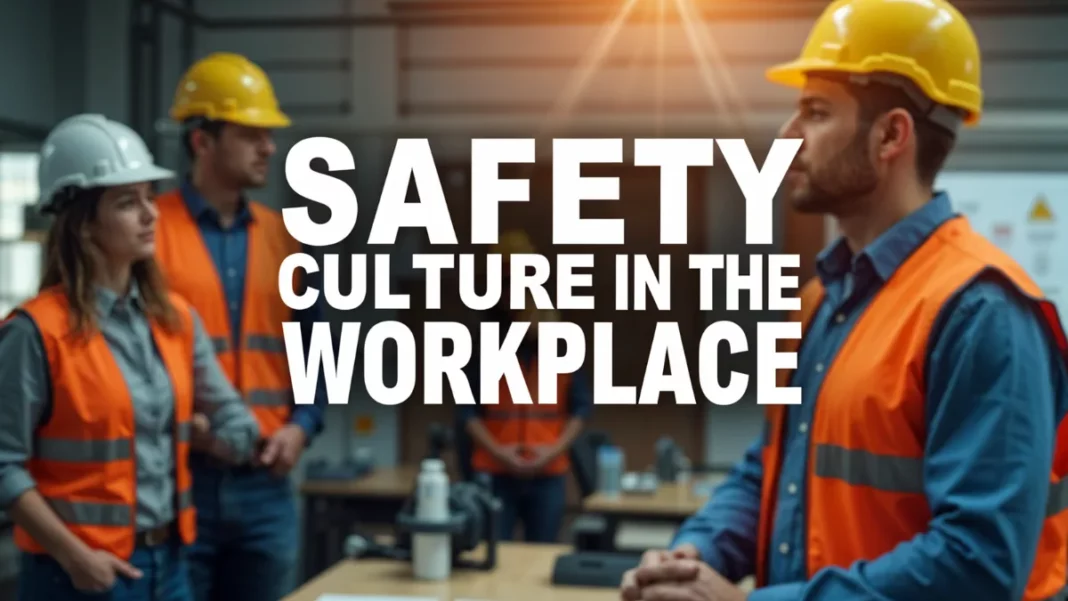Safety culture in the workplace is the bedrock of a thriving and secure environment. Many organizations struggle with fostering a truly effective safety culture, leading to preventable accidents and decreased morale. In this article, you’ll discover 11 actionable ideas, gap analysis techniques and working safety strategies to transform your workplace into a bastion of security and productivity.
Safety culture in the workplace is paramount, yet too often, it’s relegated to a checklist rather than a living, breathing aspect of daily operations. Are you truly cultivating a culture where safety is ingrained, or is it just a poster on the wall? In this article, you will get to know 11 actionable ideas, gap analysis techniques and working safety strategies to transform your workplace into a bastion of security and productivity.
Leadership Commitment and Communication
A strong safety culture begins at the top. Leaders must demonstrate unwavering commitment to safety through their actions and words. They should actively participate in safety meetings, conduct regular walk-throughs and openly communicate the importance of safety to all employees. Consistent and transparent communication ensures that everyone understands the organization’s safety goals and their role in achieving them. A culture where leaders are visibly invested in safety encourages employees to prioritize it as well.
Leading by Example: Safety Culture in The Workplace
- Leaders should actively participate in safety training and demonstrate adherence to all safety protocols.
- Regularly acknowledge and reward employees who exhibit safe behaviors.
- Openly discuss safety concerns and encourage feedback from all levels.
Employee Engagement and Empowerment: Safety Culture in The Workplace
Engaging employees in safety initiatives is crucial for building a robust safety culture. When employees feel valued and empowered, they are more likely to take ownership of safety. Provide opportunities for employees to participate in safety committees, conduct safety audits and contribute to the development of safety procedures. This fosters a sense of shared responsibility and promotes a proactive approach to safety.
Safety Committees and Participation
- Establish safety committees with representatives from various departments.
- Encourage employees to report hazards and near misses without fear of reprisal.
- Provide training and resources to empower employees to identify and address safety concerns.
Comprehensive Training and Education: Safety Culture in The Workplace
Effective training and education are essential for equipping employees with the knowledge and skills necessary to work safely. Training should be tailored to specific job roles and include practical, hands-on components. Regular refresher courses and updates on new safety regulations are also important. Continuous learning ensures that employees stay informed and competent in safety practices. This is a very important part of the 11 actionable ideas.
Job-Specific Training : Safety Culture in The Workplace
- Develop training programs that address the unique safety hazards associated with each job role.
- Include practical demonstrations and simulations to reinforce learning.
- Ensure that training is accessible and relevant to all employees.
Hazard Identification and Risk Assessment (Gap Analysis)
Conducting thorough hazard identification and risk assessments is a critical component of a strong safety culture. Gap analysis helps identify potential hazards and evaluate the associated risks. This process should involve input from employees at all levels to ensure a comprehensive understanding of workplace hazards. Implement control measures to mitigate identified risks and regularly review and update risk assessments.
Regular Hazard Inspections
- Conduct routine inspections of the workplace to identify potential hazards.
- Use checklists and other tools to ensure thoroughness.
- Document all identified hazards and corrective actions taken.
Incident Reporting and Investigation (Working Safety): Safety Culture in The Workplace
Encourage prompt and accurate reporting of all incidents, including near misses. This provides valuable insights into potential safety hazards and allows for proactive measures to prevent future incidents. Conduct thorough investigations to determine the root causes of incidents and implement corrective actions. Share lessons learned from incidents with all employees to prevent recurrence. Working safety is a major factor in the 11 actionable ideas.
Encouraging Incident Reporting: Safety Culture in The Workplace
- Establish a clear and confidential process for reporting incidents and near misses.
- Assure employees that reporting incidents will not result in negative consequences.
- Provide training on how to properly document and report incidents.
- Safety should be an integral part of daily operations, not an afterthought. Integrate safety considerations into all aspects of work, from planning and design to execution and maintenance. This ensures that safety is prioritized at every stage of the process.
Regular Safety Audits and Inspections
Conduct regular safety audits and inspections to ensure compliance with safety regulations and identify areas for improvement.
Promoting a Culture of Open Communication: Safety Culture in The Workplace
Foster an environment where employees feel comfortable raising safety concerns and providing feedback.
Utilizing Technology for Safety Management
Leverage technology to streamline safety processes, such as digital checklists, incident reporting systems and safety training platforms.
Setting Clear Safety Goals and Metrics: Safety Culture in The Workplace
Establish measurable safety goals and track progress to ensure accountability and continuous improvement.
Continuous Improvement and Review
Regularly review and update safety policies and procedures to reflect changes in the workplace and industry best practices. This is the last of the 11 actionable ideas and it is the key to maintaining a strong safety culture.
Conclusion:
Cultivating a strong safety culture in the workplace requires a holistic approach that involves leadership commitment, employee engagement and continuous improvement. By implementing these 11 actionable ideas, organizations can create a safe and productive environment where everyone thrives. Remember, safety is not just a policy; it’s a shared responsibility and a fundamental value.
FAQs:
How can you measure the effectiveness of your safety culture in the workplace?
You can measure it through incident rates, employee surveys and safety audits.
What are the key components of a strong safety culture?
Key components include leadership commitment, employee engagement and effective communication.
How can your encourage employees to report safety incidents?
Establish a confidential reporting system and assure employees that there will be no negative consequences.
What is gap analysis in relation to workplace safety?
Gap analysis helps identify discrepancies between current safety practices and desired safety outcomes, allowing for targeted improvements.
Why is working safety important?
Working safety prevents injuries and accidents and creates a positive work environment.
Also Read: CEO: 10 Characteristics of Effective Leadership
David William comes from an Engineering background, with a specialization in Information Technology. He has a keen interest and expertise in Web Development, Data Analytics, and Research. He trusts in the process of growth through knowledge and hard work.


